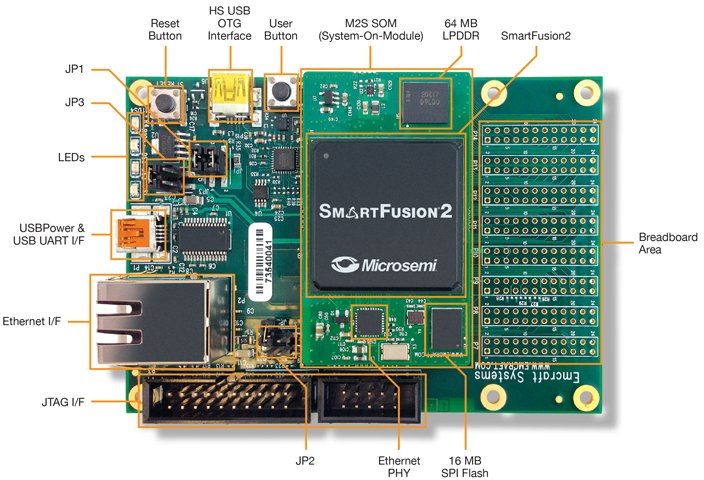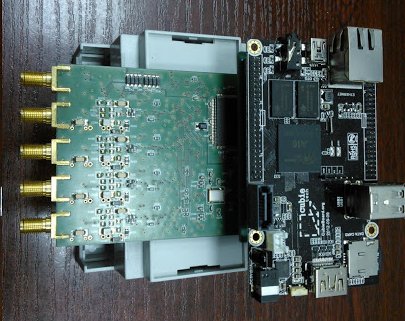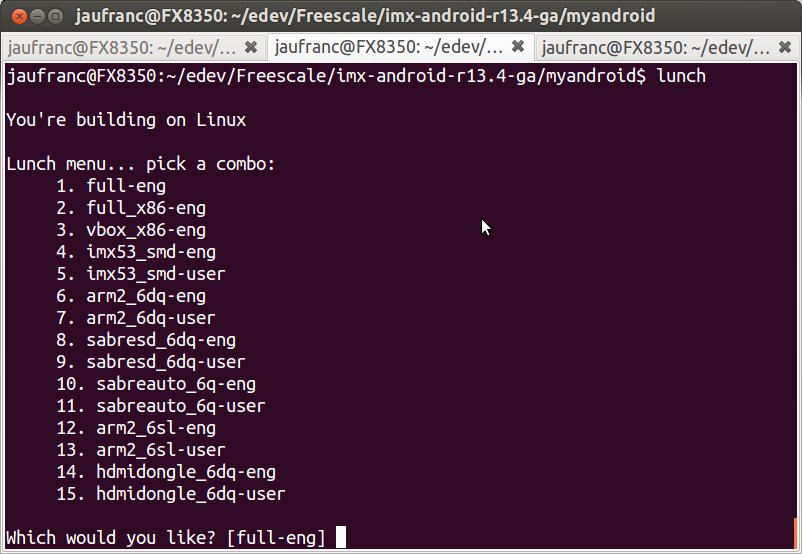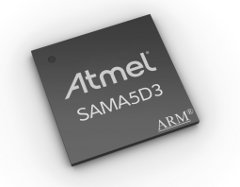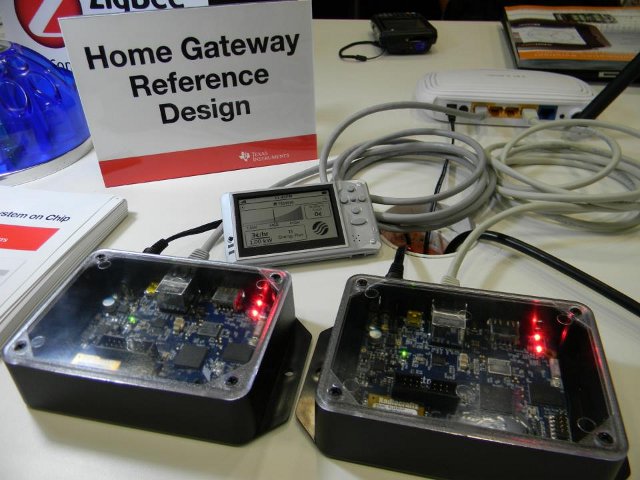Microsemi SmartFusion2 SoC family combines an ARM Cortex-M3 Core @ 166 Mhz and FPGA Fabric with up to 12M Gates, and comes with up to 512 KB eNVM and 64 KB eSRAM, 1 CAN A & B interface, 1 GbE port, 1 USB 2.0 OTG, and diverse serial interface. Last year I received Emcraft SmartFusion Starter Kit using the first generation of the starter kit, and Microsemi (previously known as Actel) and Emcraft Systems have recently announced the second generation with the SmartFusion2 Starter Kit. The main hardware features include: SmartFusion2 SoC FPGA in FG896 package (M2S050T-FG896ES) with 256KB eNVM, 64KB SRAM, and 48,672 logic modules. JTAG interface for programming of the SmartFusion2 device 10/100 Ethernet interface and RJ-45 connector USB OTG interface and mini-USB connector USB based Wi-Fi Module 64MB LPDDR, 16MB SPI flash User push-button connected to GPIO on the SOM Two user-controlled LEDs connected to GPIO on […]
Headless Connected Oscilloscope based on Cubieboard or Beaglebone
Warsaw ELHEP (Electronics for High Eenergy Physics Experiments) Group is currently working on MMS (Mobile Measurement System) Project. This project features what I would call a “headless connected oscilloscope”, which can be detected on the network via SSDP, send the data via Websocket, and display it on iOS, Android, or Windows Phone devices. This oscilloscope does not feature any screen, and receives/transmits data via Ethernet, Wi-Fi, or Bluetooth. The original hardware is based on three main boards: CTI-VMAX – ARM9 with Wi-Fi, Bluetooth, and Ethernet connectivity. ARM SCOPE v1.0.1 with 8 channel ADC. ARM SCOPE v1.0.2 with 4 high speed ADC (100MSPS). The ELHEP researchers have been looking at replacing CTI-VMAX with low cost boards, and after considering several options, they chose to design two versions of their oscilloscope: one based on Cubieboard, and the other on the Beaglebone. So they designed expansions boards for the Cubieboard and Beaglebone in […]
Linux Conference Australia and FOSDEM 2013 Videos are Now Online
FOSDEM 2013 took place last week, and the organizers are in the process of uploading videos. Up to now, 5 main tracks sessions have been uploaded (Firefox OS; Free, open, secure and convenient communications; FreedomBox 1.0; Samba 4; and systemd, Two Years Later) as well as over 20 lightning talks. You can find the videos at http://video.fosdem.org/2013. You may also want to check my previous post for a lists of interesting talks, and I’ll probably feature some FOSDEM 2013 videos in this blog, at least the open source GPU driver talk. Linux Conference Australia took place on January 28 – February 1, 2013, and the 5-day conference featured lots of talks including several dealing with graphics in Linux, and one developer apparently trashing X in terms of complexity and performance, and explaining how Wayland was better. Others Linux sessions dealt with subject such as 3D printing, supercomputing, Arduino, big.LITTLE processing, […]
Quake 3 Arena Demo Using Lima Driver is (Slightly) Faster than Mali-400 Binary Driver
As mentioned previously, Luc Verhaegen was to give a talk about the status of Lima driver (reverse-engineered Mali-200/400 GPU driver), as well as other GPU open source implementation, at FOSDEM 2013. This is now done, and part of the talk included a demo of Quake 3 Arena (q3a timedemo) running on tablet featuring AllWinner A10 SoC (Cortex A8 @ 1Ghz, Mali-400MP1 GPU @ 320 Mhz, and DDR3 memory @ 360MHz), and a 1024×600 LCD. The fact it works is already a great achievement in itself, but this demo runs at 47.2fps with Lima driver (limare), whereas it can be rendered at 46.2fps using the binary driver. In his blog, Luc also explains that apart from being 2% faster, it also uses 3% less cpu than the binary driver! Take that binary blobs! There’s still more work to do however, as this Quake 3 Arena port is not playable yet for 2 […]
U-boot, Linux Kernel, and Android Patches for Freescale i.MX6 HDMI TV Dongles
We can now get some quad core Android mini PCs (e.g. Hi802, GK802) featuring Freescale i.MX6Q processor, Freescale has released full documentation and source code its development platforms, Hi802 / GK802 HDMI TV dongles are easily hackable, and there’s even an Ubuntu image for the devices. So it looks pretty good ,right? Well almost.. there are some patches and config for GK802 that have not been released by Richtechie, so we can’t modify the bootloader and Linux kernel. But this may change, as ARMTvTech forum user hste noticed some Freescale i.MX6 HDMI dongle patches om IMX Community website. Even though I’m not sure those are fully compatible with Hi802 / GK802, this could be a starting point. Today, I’ll provide the instructions to build u-boot, the linux kernel and Android ICS with those patches in a machine running Linux 12.04 64-bit. Patch Sets Descriptions There are two set of patches that […]
Atmel Introduces SAMA5D3 Cortex A5 Embedded MPUs and Evaluation Kits
Atmel has recently announced the Atmel SAMA5D3 series, a family of high performance, low-power microprocessor units (MPUs) based on ARM Cortex-A5 core. The SAMA5D3 series is designed for embedded applications in the industrial space, including factory and building automation, smart grid, medical and handheld terminals, as well as consumer applications such as smart watches, outdoor GPS, and DECT phones. SAMA5D3 family has the following characteristics: ARM Cortex-A5 core up to 536MHz (850DMIPS). Floating point unit (FPU) with up to 3 times the performance of Cortex A8 FPU. 166MHz bus speed delivering up to 1328MB/s bandwidth. Power consumption: <200mW in active mode at 536MHz with all peripherals activated 0.5mW in low-power mode with SRAM, registers retention and <0.5ms wake-up time ~1.2µA in backup mode with RTC running Connectivity: Dual Ethernet and dual CAN ports (Only one model has both) Gigabit Ethernet MAC with IEEE1588 and 10/100 MAC Two CAN controllers 3x […]
Texas Instruments HG3352 Home Automation & Energy Gateway Reference Design
Texas Instruments has recently announced HG3352 Home Gateway Reference Design that can connect to home energy systems, or/and home automation systems. This reference design, powered by TI Sitara AM3352 Cortex A8 processor, supports ZigBee, Wi-Fi, NFC, Bluetooth, and Ethernet connectivity to allow developers to create home gateways that can interface with multiple systems, products and applications within a smart home. Here are the key features and benefits of TI HG3352 Home Gateway Reference Design: SoC – TI Sitara’s AM3352 ARM Cortex-A8 processor running Linux OS System Memory – 2GB DDR3 Storage – 2GB NAND Flash memory Connectivity: Single ZigBee device (CC2530) supports ZigBee Home Automation and ZigBee Smart Energy standards. WiLink 8.0 solution supports Wi-Fi, Bluetooth, and Bluetooth low energy in a single chip. 6-channel power management integrated circuit (TPS650250) with dynamic voltage scaling provides high power efficiency. Expansion headers give developers flexibility to support power line communications (PLC) and […]
A Selection of FOSDEM 2013 Events
FOSDEM is a 2-day (or 3 if you include Friday beer event) event where over 5,000 members of open source communities meet, share ideas and collaborate. It’s free to attend, and there’s no registration, so you just show up to attend. FOSDEM 2013 takes place on Feb 2-3 (yep, this week-end) in Brussels There are 7 main tracks where sessions are organized: Operating systems Open source challenges Security Janson Beyond operating systems Web development Miscellaneous Robotics There are also keynotes and devroom for a total of 488 sessions. Developers rooms that may particularly be of interest to readers of this blog are: Cross Desktop devroom – e.g. Wayland, gstreamer, razor-qt, Qt Project, Plasma Active, etc… Cross Distro devroom – e.g. Linux on Android, suse on ARM, ARMv8, systemd, etc… Embedded and mobile devroom – e.g. Baserock Embedded Linux, Guacamayo (Yocto), Nemo Mobile/ Mer project, arduino… All in all that’s a […]


